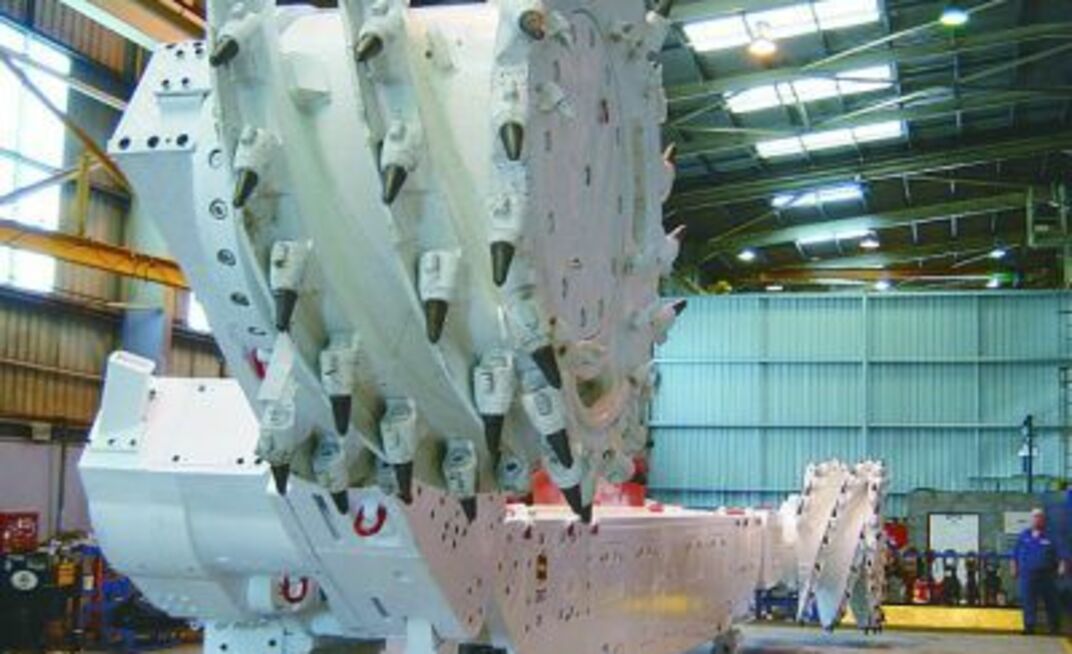Published in American Longwall Magazine
While longwall shields already incorporate a significant level of automation, including some error management, in most cases shearer automation is still fairly basic.
Longwall shearer automation has a varying level of significance in global markets. Some countries, particularly developing nations, continue to operate at the outer fringes of the technology revolution, while others are actively pursuing automation through the use of standard original equipment manufacturer features.
Safety, more consistent output and ancillary higher levels of productivity are typically the main driving factors. Also, the focus of shearer automation is about automating the cutting process rather than remote operation – a distinction often missed in automation discussions.
For the past four years German longwall equipment manufacturer DBT has worked closely with Australian operators to establish the key building blocks for shearer automation.
The move to automation for the Australian market is a high priority for two reasons. Firstly, Australian mines are regarded as being more prepared to embrace new technologies and secondly, the ACARP (Australian Coal Association Research Program) Landmark Longwall Automation Project (see related article on page 56). This important research and development effort has been running for four years with the involvement of several research groups, mines and OEMs.
Xstrata Coal’s Beltana mine in New South Wales is the current test site for the various components being delivered by the automation project.
Management at the site, in particular electrician Peter Henderson, have also been pivotal in detailing some of the architecture underpinning the OEMs vision for automation.
While it is impossible to tease out the main contributor to the mine’s early good results - a superb workforce, integration of landmark technologies and the DBT EL3000 shearer – these are clearly all parts of a puzzle fitting together very nicely.
As part of the automation project the Beltana shearer required the development of ‘state based models’ and capabilities within the shearer control system.
State based models refer to a series of defined states built into the operating system that govern the current operating state of the shearer. The elements on a shearer requiring automation are very simple and basically include speed, direction and ranging arm position.
For example, the shearer progresses along the face in one state, then once it reaches a certain position it adopts a different state. As the shearer approaches the gate-end it slows down (enters another state), until transition to the next state, which is controlled by an operator pushing a button. In future, the system itself will authorize transition.
Some 30 different states are defined across the length of a shear with a range of critical parameters governing the transition to each different state.
Simplistically speaking, the shearer now has the ability to recognize the status of other parts of the face – for example the supports and armored face conveyor – which has an impact on its own function, at any given moment in time. For example, it ‘understands’ that if shields are in a certain position and the AFC is carrying a certain load, it could continue operating in its current state. Any changes to key parameters would launch a pre-defined transition to another state.
As the operations conducted in the gate-end are more complex, a multitude of states are defined for this part of the cutting cycle.
Each individual mine requires different parameters which cover areas such as AFC overload. Importantly, this makes automated haulage and machine start-up initiation feasible without human intervention for the first time.
Thus the completion of a machine command or the completion of an AFC or shield function would kick in the transition to another state automatically.
These state based models have been incorporated into the Beltana shearer design and were delivered to the site in April this year.
As is the case with any automation, a great number of inputs from multiple sensors have to be collected and rapidly transported to a central operating system requiring ethernet communication capabilities on the shearer and throughout the longwall.
The system also incorporates enhanced horizon control. In addition to standard steering control, information can be transmitted to the shearer to adjust the cutting height.
For the first time ever DBT has incorporated a degree of intelligence into the shearer, DBT shearer capital business unit manager Ray Chadwick said. These error states detail predictable situations that occur during operation and which the shearer can be programmed to “manage”. These might include conveyor overload, shield collision or loss of power.
DBT’s shearer automation is a plug-in to the COMPACT shearer control system with the front-end software called Navigator 2.
DBT said future integration of associated development information is scheduled for 2005 and will include cutting hour production and monthly production.
Navigator 2 has been ordered by four Australian mines as an upgrade and is also available to US and global markets.
























